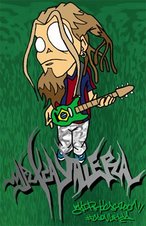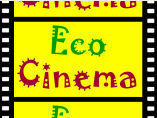
The end of the sixties marked also the end of the youth movement and the political influences of the counterculture to music. Main causes were a violent turn in grassroots politics, violent incidents (Altamont, Manson murders) that blurred the idyllic image of the movement, the increase in use of “hard” drugs like cocaine and heroin, and the American government initiatives to put an end to the formation of a substantial political force of dissidence.
Marxist, Maoist, and violent anarchist tendencies tried to influence the movement towards a more violent revolutionary direction, away from pacifist hippie (and non-violent anarchist or communitarian) politics. Many politically active musicians like John Lennon, CSNY, Jefferson Airplane and others, tried to contribute towards maintaining the unity of the movement, but that proved futile. Groups that flirted with terrorism (like the Weatherman, who evolved from the Students for a Democratic Society) gave a serious blow to the movement, since they lost contact with the mass movement and… reality!
In December 1969, at the Altamont Free Concert , or "Woodstock West" as it was billed, about 300,000 people gathered to hear The Rolling Stones; Crosby, Stills, Nash and Young; Jefferson Airplane and other bands. The Hells Angels provided security that proved far less beneficent than the security provided at the Woodstock event: 18-year-old Meredith Hunter was stabbed and killed while drawing a gun in front of the stage during The Rolling Stones performance. The events at Altamont shocked many Americans, including those who had strongly identified with hippie culture, and marked the “beginning of the end” of the hippie era, of the innocence embodied by Woodstock. Critics called the tragedy the "Death of the Woodstock Nation" .
Another shock came in the form of the Sharon Tate and Leno and Rosemary LaBianca murders committed in August 1969 by Charles Manson and his "family" of (“hippie-like”) followers.
In September 1970, Jimi Hendrix dies (in bed after drinking wine and taking nine Vesperax sleeping pills, then asphyxiating on his own vomit) and two weeks later Janis Joplin follows (overdosed on heroin while drunk). Next year Jim Morrison dies (overdosed on heroin).
Neil_young, inspired by the death of Danny Whitten, an original Crazyhorse member, by a heroin overdose, wrote the song "The Needle and the Damage Done" (included in the album “Harvest”, 1972), a lament for talented artists who died because of heroin addiction. Young described the incident to Rolling Stone’s Cameron Crowe in 1975, admitting that "That blew my mind. Fucking blew my mind. I loved Danny. I felt responsible. And from there, I had to go right out on this huge tour of huge arenas. I was very nervous and . . . insecure."
In 1971, Jefferson Airplane reach near collapse. Drummer Spencer Dryden had left the band in February 1970, burned out by four years on the "acid merry-go-round" and deeply disillusioned by the events of Altamont which, he later recalled "... did not look like a bunch of happy hippies in streaming colors. It looked more like sepia-toned Hieronymus Bosch." He took time off and later returned to music in 1972 as a drummer for the Grateful Dead spin-off band New Riders Of The Purple Sage.
After Lennon’s appearance at the Free John Sinclair rally, the Nixon administration, alarmed by the extent of political influence that he could have had on young people, tried to deport him. In the ensuing three-year legal battle he lost his artistic vision and energy, his relationship with Yoko disintegrated, and he gave up his radical politics. In this period Lennon became a defeated activist, an artist in decline, an aging superstar (see more in bagism and its reference to the book "Come Together: John Lennon in His Time" by Jon Wiener).
Despite all these signs of despair and collapse, an underground transformation seems to take place, during the same period. According to an article that we found in Hippie Museum (Earth Consciousness ):
The natural effect of the new Awareness was a heightened Earth Consciousness, and as Hippies began to feel the mystical connection of their very Beings as being intertwined and interdependent with that of the Planet, they began to be able to see their World as the enchanted land it is - a loving Mother Nature that nourished their very lives, and concern for the environment grew and information and "shining examples" of the new ways of living and thinking quickly spread. Ironically, the new way of living was in many cases a return to the old way of living, as people began to turn away from the high-voltage, high-powered tools and gadgets, poisons and medications of modern society, and to cherish the simple and natural, the homemade and homegrown.
Proof of the Revolution abounded. In 1968, the informative Whole Earth Catalog was born, a cherished publication that offered information on not only how to live Life more naturally, but held an extensive list of goods and services available with which to do so.
Another great source of Earthy information of the"Back to the Land Movement" of the day was Alicia Bay Laurel's " Living on the Earth." Written on Wheeler's open land ranch, It was a delightfully illustrated and in-depth how-to-survive in the country manual "for people who would rather chop wood than work behind a desk." The book was also a milestone marking the height of a Hippie way of living that was close to nature, with a focus on sustainable living and communal consciousness.
Word spread quickly around the world of the awakening awareness of the intense damage that had been done to this planet, whose natural resources had been depleted to a critical stage by the destructive forces of an ignorant and greedy society, and people began to come together and spread the news. The slogan "think globally, act locally" was a popular one during those days, and on March 21, 1970, the first Earth Day took place in San Francisco. It was soon celebrated across the planet by over 20 million individuals, including students from 1,500 Universities. Getting more popular and with more impact each year, it brings Fun and Environmental Enlightenment while renewing our awareness of and our relationship with our precious "Mother Earth."
(…) As people began looking for ways to become involved and help "Save the Earth," membership in such groups as the Sierra Club climbed, as people joined in the hopes of helping the plight of the World through direct action. In 1971 the organization Greenpeace was formed, to help put an end to nuclear testing and to help bring "Green Consciousness" to the Planet. Many Hippies began reading of the wonders of nature from the viewpoint of the renowned California naturalist John Muir, and Thoreau's Walden Pond gained a newfound following.
Returning to the music, we cannot but remark that it followed somehow, by becoming more diversified. Some currents became “harder” (heavy metal, punk rock), while others maintained a mellower tone. However, in a very diverse array of genres we continue to discover lyrics about the destruction of the planet, the need to protest about it, and some hints about more practical solutions. We have already started to present and comment on songs of the early seventies (from soul to heavy metal). Follow us in our journey to the “green” rock-music world and help us to discover more messages and lyrics about ecology.
12 October, 2007
The “end” of the sixties. Rock diversifies. Hippies transform to environmentalists.
Αναρτήθηκε από
candiru - stratis aigaiopelagitis
στις
1:49 PM
![]()
Ετικέτες views and written texts
Subscribe to:
Post Comments (Atom)




No comments:
Post a Comment